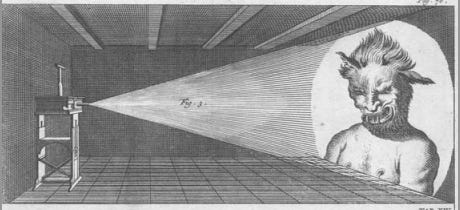AI really is smoke and mirrors

🌈 Abstract
The article discusses the "smoke and mirrors" moment in the generative AI industry, drawing parallels between the current hype and mythologizing around AI and the historical use of "magic lanterns" and "phantasmagoria" to create elaborate illusions. It examines how AI companies are leveraging uncertainty and the promise of transformative AI capabilities to drive interest and investment, despite growing evidence of underperformance and limitations in real-world applications.
🙋 Q&A
[01] AI's Smoke and Mirrors Moment
1. What are the key parallels drawn between the current state of generative AI and the historical use of magic lanterns and phantasmagoria?
- The article draws parallels in how both technologies were used to create elaborate illusions and convince the public of the presence of supernatural or transformative powers, tapping into widespread social anxieties and uncertainties.
- Just as magic lanterns were used by illusionists and charlatans to project "fantastic and fictional images" and summon the appearance of "demons and devils", the author argues that generative AI systems are being used by tech companies to create "analogical demonstrations of undemonstrable philosophical principles" around the inevitability of AGI.
- The hype and mythologizing around AI, led by figures like Sam Altman, serves a similar purpose to the original "smoke and mirrors" - to articulate and underline beliefs in the transformative potential of the technology, even in the face of growing evidence of its limitations.
2. How does the author characterize the current state of the generative AI industry?
- The author describes the generative AI industry as being in a "smoke and mirrors moment", where there is widespread uncertainty about the actual capabilities of the technology, but it nonetheless enjoys broad cultural and economic interest.
- Despite reports of underperformance, corporate struggles, and backlash against overhyped claims, the industry continues to be propped up by the aggressive promotion of the vision of transformative AGI by tech leaders.
- This allows AI companies to maintain the narrative and "mythos" around their products, even as the "facade may begin to fall away" and the limitations of the technology become more apparent.
3. What are some of the key challenges and shortcomings facing the generative AI industry that the author highlights?
- Corporations using top AI services are reporting "unremarkable gains", and AI salespeople have been asked to rein in their promises to avoid underdelivering.
- There is growing "anti-generative AI cultural backlash", and a recent scientific paper has cast doubt on AI developers' ability to continue dramatically improving model performance.
- The industry has also acknowledged that it can no longer accurately measure how good its models are, and must rely on the companies' own claims of "improved capabilities".
- High-profile AI-centered consumer hardware, like the Humane AI Pin, have "crashed and burned" in their debuts.
- Several prominent AI startups, like Stability AI and Inflection, have faced setbacks, scandals, and struggles to gain market traction.
[02] The Parallels to Historical "Smoke and Mirrors"
1. What is the origin and historical context of the "smoke and mirrors" concept?
- The phrase "smoke and mirrors" is said to have originated from a journalist writing about the Nixon administration, describing an "elaborate illusion that ultimately holds no substance at all".
- The term was originally derived from the use of "magic lanterns" in the 17th and 18th centuries, which used a concave mirror and candle flame to project images onto a surface, creating the illusion of supernatural or fantastical phenomena.
- These "magic lantern" devices were often exploited by illusionists, magicians, and charlatans to convince audiences of their ability to summon "demons and devils" or communicate with the dead, tapping into widespread social anxieties and uncertainties of the time.
2. How does the author draw parallels between the historical "smoke and mirrors" and the current state of generative AI?
- Just as the magic lanterns allowed operators to create more convincing "analogical demonstrations" of abstract or unprovable concepts, the author argues that generative AI systems are being used to create "analogical demonstrations of undemonstrable philosophical principles" around the inevitability of AGI.
- The public's "bewilderment" and "reason for excitement" over the projected images of the magic lanterns is echoed in the reactions to the capabilities of modern chatbots and image generators, which some users have found "deeply unsettling" or "freaky".
- The author suggests that, like the magic lantern operators, AI companies are heavily relying on "mythologizing" and hype to push their products, as the actual market propositions and capabilities of the technology remain "remarkably nebulous".
3. What are the key differences and similarities the author identifies between the historical "smoke and mirrors" and the current state of generative AI?
- The author acknowledges that the contexts in which the magic lanterns and generative AI were developed and deployed were quite different, but still finds "plenty to chew on" in terms of historical parallels.
- Both technologies were embraced by illusionists, magicians, and charlatans seeking to exploit public fascination and anxiety around new, seemingly transformative capabilities.
- However, the author notes that the "devil" behind the current "delusions" is not supernatural, but rather the concept of AGI being pushed by tech leaders, which lends a sense of gravity to the capabilities of large language models.
- Unlike the magic lanterns, generative AI has "real gravitational pull" and "real tech behind those smoke and mirrors", as companies are desperately seeking to implement the technology, even if it falls short of the promised benefits.